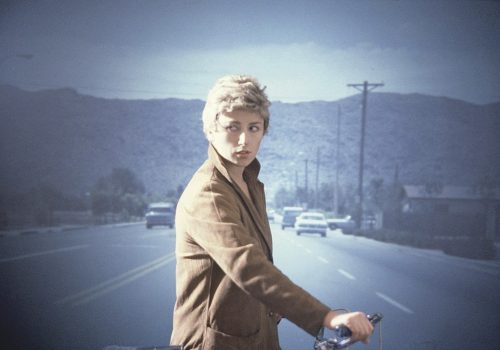The Eye of Photography brings you a selection of iconic covers and archival photographic material from the magazine L’Insensé dating from the early 2000s. The selection covers three remarkable issues.
L’Insensé: Women & Photographs (2000)
From its inception, photography was a male domain, an adventure in chemistry marked by twists and turns and scientific patents. Very quickly, however, feminine curiosity took over this romantic medium which showed an unlimited potential for reproduction. Women first learned the art of posing. However, starting in the mid-19th century, they stepped on the other side of the viewfinder. And off we go! From now on, women would ply this new trade and try their hand at studio portraiture and photo reporting alike — and in every other possible genre. It certainly took time before they made their way into dictionaries and were given the credit they deserved. Nowadays, no one would dream of challenging the importance of women in the history, however brief, of photography. The theme of this first issue of the magazine came quite naturally, and it was edited with the refined, poetic collaboration of the journalist Brigitte Ollier.
L’Insensé: Special Japan issue (2001)
The country is spellbinding: the focal point of a new world where everything turns into an image. Between violence and contemplation, energy and inertia, tradition and modernity, reality and fiction, the opposites are the very essence of Japanese creativity. Contemporary Japanese photography transforms and captures these vivid contradictions. Building on some great historical figures (Hosoe, Ueda, Ishimoto, Hiro, Fukase, Moriyama), so crucial in shaping the present generations, this issue engages directly with contemporary Japan through its young photographers and the delightful diversity of their concerns. It shows us their unparalleled imaginations free of any cultural yoke. Hiromix, Yoichi Nagano, Mika Ninagawa: their images ushered new aesthetic codes.
L’Insensé: Special Netherlands issue (2002)
This issue took the form of an ABC: from Koos Breukel, who photographs human scars, to Anton Corbijn, who does offbeat portraits of celebrities, to Maurice Scheltens, who reinvents Dutch still life, to Marcel van der Vlugt who gives it a face. The issue also included graduates of La Rietveldt, the great Dutch school of photography, with portraits by Rineke Dikkstra or sublimely milky bodies by Carla van de Puttelaar. The compendium revels in uncovering a photographic territory which quickly burst onto the international scene with its inventiveness: a new golden age of Dutch art.
















